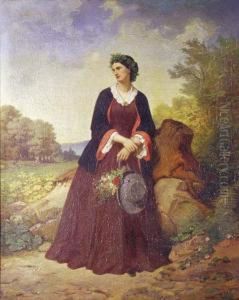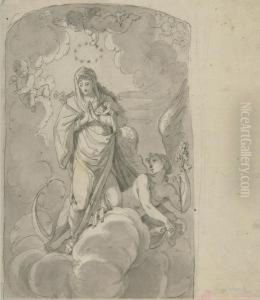Philip Von Foltz Paintings
Philip von Foltz was a German painter known for his historical scenes and portraits. Born in 1805 in Altona, which at the time was under Danish rule but is now part of Hamburg, Germany, Foltz showed an early interest in art. He initially studied in Hamburg and then moved to Munich, which was emerging as a vibrant artistic center in Germany. In Munich, he became a student at the prestigious Academy of Fine Arts and was influenced by the works of Peter von Cornelius and Wilhelm von Kaulbach, who were prominent figures in German Romanticism and the Nazarene movement.
Although not as widely known today as some of his contemporaries, Foltz was a respected artist in his time. He became a professor at the Munich Academy, and his work was characterized by a meticulous attention to detail and a strong narrative quality, often imbued with a sense of romantic nationalism that was common in German art of the period. He painted frescoes in several public buildings in Munich, including the New Pinakothek and the Ludwig I of Bavaria palace.
Foltz's historical paintings often depicted scenes from German history, which resonated with the burgeoning sense of national identity in the German states during the 19th century. He was also known for his portraits, which captured the likeness and character of his subjects with a high degree of realism. His works were exhibited in various European cities and contributed to the artistic discourse of the time.
Philip von Foltz died in 1877 in Munich. Although he is less celebrated than some of his peers, his contributions to the art of the 19th century remain part of the rich tapestry of German Romanticism and the historicist styles that dominated the era. His paintings can still be viewed in museums and collections in Germany and serve as a testament to his skill and dedication to the depiction of historical narrative through art.




